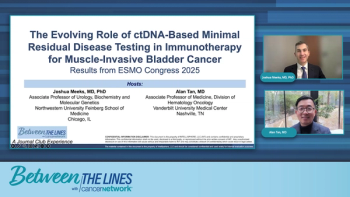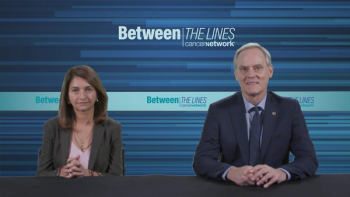
Clinician Experiences: COCOON Regimen vs Traditional SoC AE Management
Panelists discuss how the standardized COCOON regimen offers clear guidance for managing dermatologic adverse effects, with specific components such as clindamycin lotion for the scalp and chlorhexidine wash for nails showing effectiveness.
Episodes in this series

Video content above is prompted by the following:
Amivantamab Dermatologic Toxicity Management Protocol
Key Protocol Components
- Proactive Management Approach
Initiating doxycycline prophylactically before rash development
Using a predefined regimen that can be incorporated into standard order sets
- Specific Interventions
Chlorhexidine wash for fingernails and toenails to prevent periungual pyogenic granulomas and paronychia
Clindamycin lotion for scalp application (noted as being more practical than previously used antibiotic ointments)
Ceramide-containing moisturizers to restore skin barrier function, improve hydration, and reduce inflammation
Clinical Observations
- The protocol appears effective at preventing or minimizing common dermatologic adverse events associated with amivantamab
- Practitioners noted specific improvements in managing:
- Facial rash
- Periungual issues (granuloma tissue formation)
- Scalp reactions
- Overall skin dryness
Practitioner Perspectives
- Standardization was welcomed to address practice variability (“30 doctors doing things 45 different ways”).
- Previous approaches included various scalp treatments (steroid shampoos, Selsun Blue).
- The evidence-based protocol provides consistency in management across the practice.
- Protocol development involved input from investigators and dermatologists specializing in patients with cancer.
Conclusion
Implementation of this standardized prophylactic protocol appears to improve management of amivantamab-associated dermatologic toxicities through proactive intervention rather than reactive treatment, with positive feedback from practitioners regarding both efficacy and practical application.
Newsletter
Stay up to date on recent advances in the multidisciplinary approach to cancer.

















































































